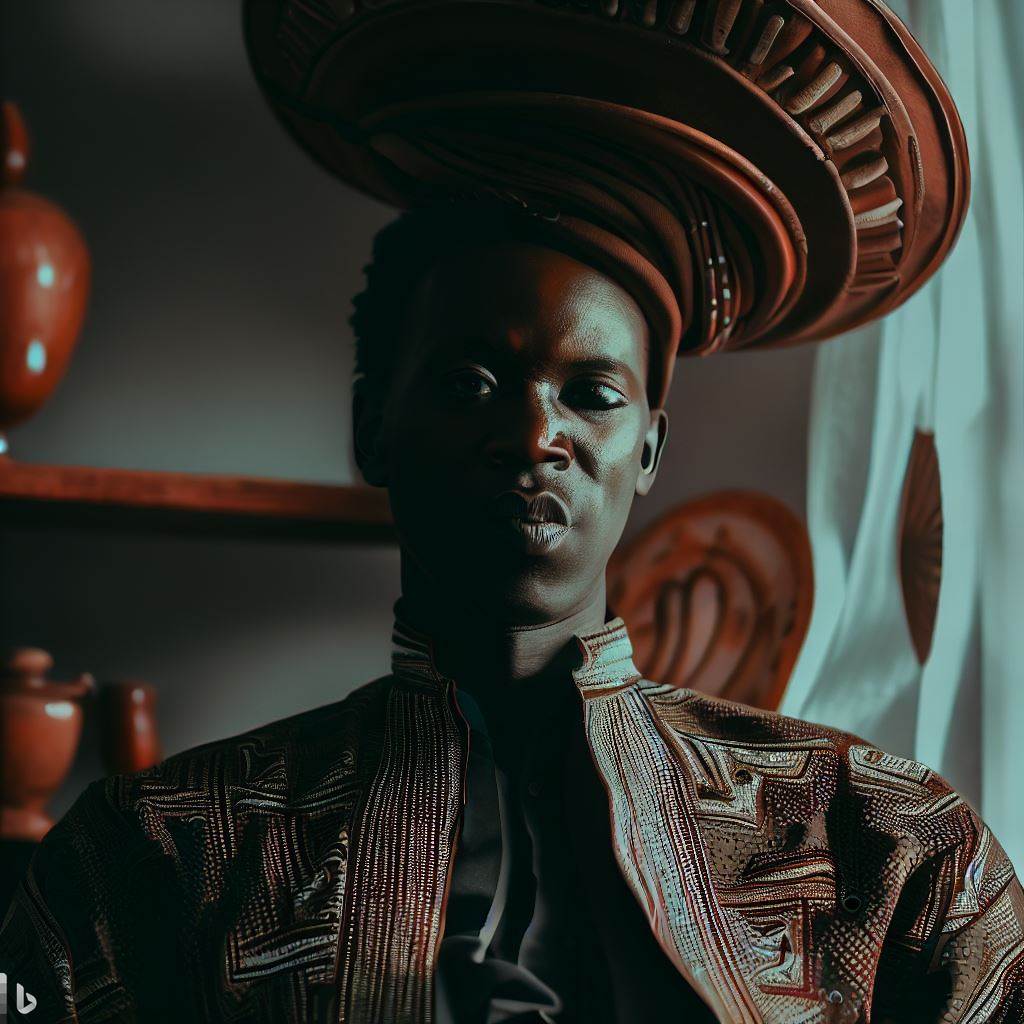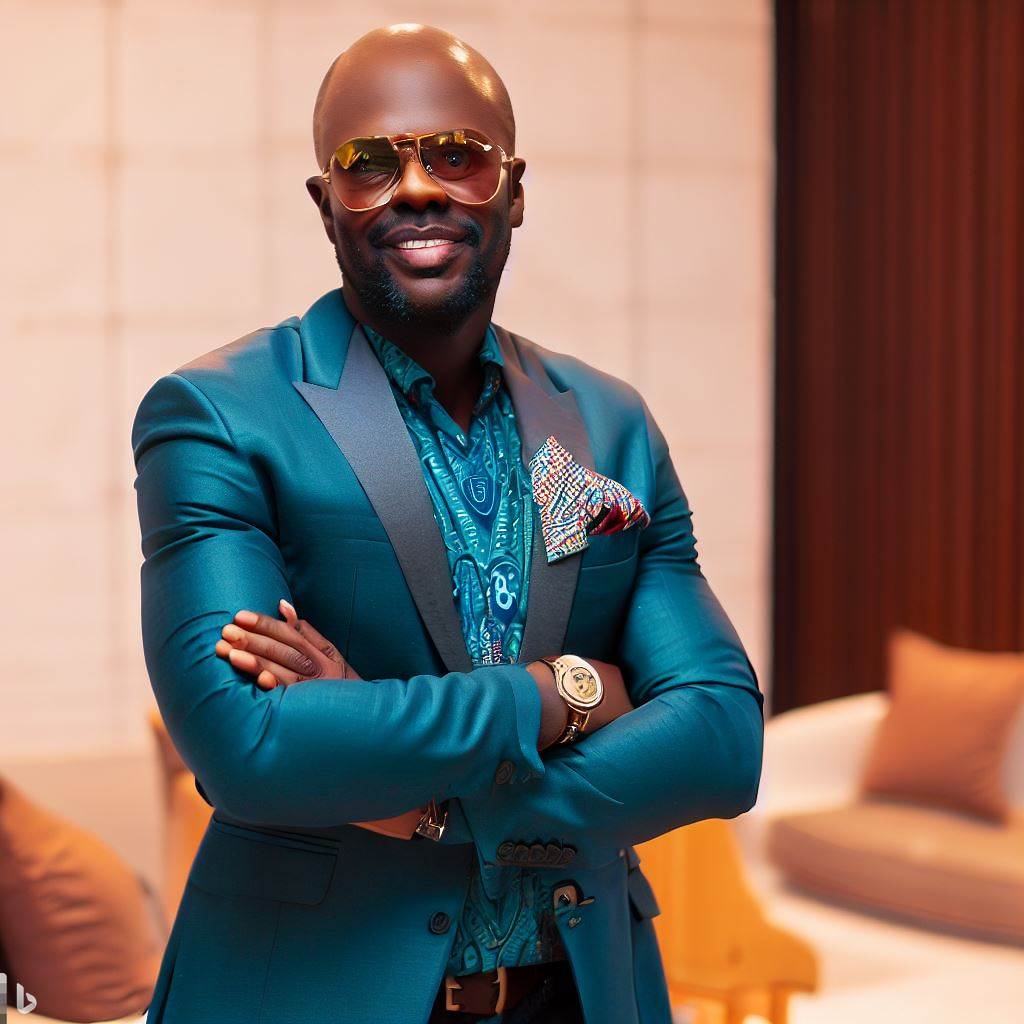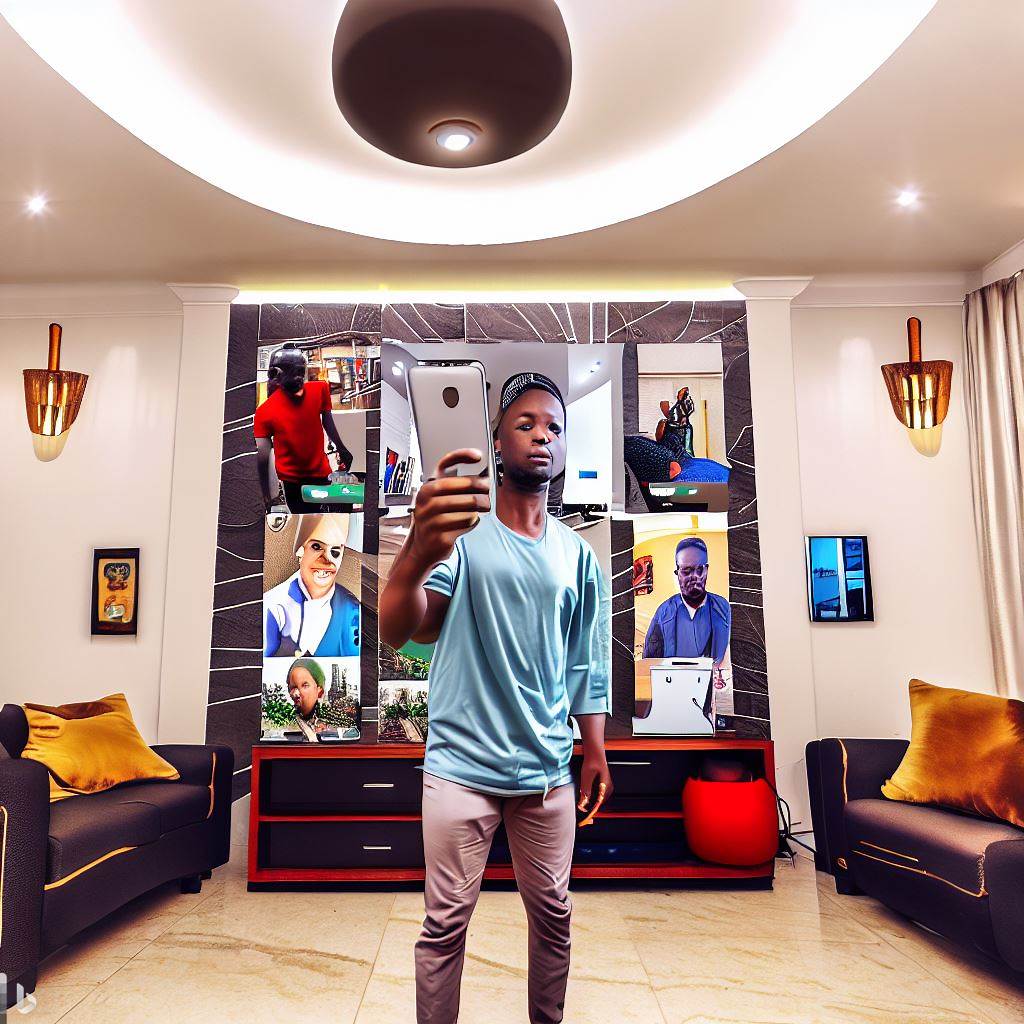Introduction
Nigerian interior design is a dynamic field deeply rooted in the country’s rich cultural heritage.
Interior design in Nigeria seamlessly blends modern aesthetics with rich cultural heritage.
This chapter delves into the pivotal role of culture in shaping Nigerian interior design.
In this blog post, we will explore how culture influences Nigerian interior design, aiming to understand its significance in shaping this creative industry.
- Unique Identity: Culture infuses spaces with local art, textiles, and elements, creating personalized atmospheres.
- Historical Narratives: Designs often reflect Nigeria’s diverse history, telling stories through visual motifs.
- Traditional Influences: Ethnic patterns, materials, and craftsmanship evoke cultural pride within interiors.
- Modern Context: Contemporary designs incorporate traditional elements, preserving culture amidst urbanization.
- Societal Expression: Nigerian interior design becomes a canvas to express individual and collective cultural values.
By exploring culture’s impact, we uncover the symbiotic relationship between Nigerian interior design and cultural identity.
Overview of Nigerian Culture
Nigeria, dubbed the “Giant of Africa,” brims with cultural diversity in West Africa.
This fusion originates from 250+ ethnic groups, each with distinct traditions, influenced by history and geography.
Prominent groups like Yoruba, Igbo, and Hausa-Fulani shape Nigerian culture significantly.
Rooted in ancient civilizations, Nigerian culture mirrors empires like Benin and Oyo in art, architecture, and practices.
Music and dance shine, from highlife to Afrobeat, symbolizing Nigerian identity worldwide.
Cuisine mirrors diversity—jollof rice, pounded yam, egusi soup—with bold flavors and local ingredients.
Religion’s impact is profound. Islam, Christianity, and traditional African practices coexist, uniting communities through rituals and festivals.
Heritage links past to present, preserving values in a diverse society. Families pass down customs, forging identity.
Nigerian culture influences fashion, with traditional fabrics incorporated into modern attire, blending heritage with modernity.
Interior design embraces cultural motifs, crafting unique, visually captivating spaces melding tradition and innovation.
Nigeria’s cultural tapestry inspires artists, writers, and designers, fostering creativity, national pride, and a vibrant identity.
Read: Challenges and Opportunities in Nigeria’s Interior Design Field
Impact of Nigerian Culture on Interior Design
When it comes to interior design, culture plays a significant role in shaping the way spaces are created and decorated.
In Nigeria, the rich and diverse cultural heritage of the country has a profound influence on interior design choices.
From the use of vibrant colors, patterns, and textures to the incorporation of traditional arts and crafts, Nigerian culture is evident in every aspect of interior design.
Influences on Interior Design Choices
The Nigerian culture is deeply rooted in tradition and customs, and these influences are reflected in interior design choices.
Nigerians take pride in their heritage and often prefer to infuse their spaces with elements that showcase their cultural identity.
This includes incorporating traditional patterns, motifs, and textiles into interior design.
The use of vibrant colors is another significant aspect of Nigerian interior design.
Nigerians have a fondness for bold and bright hues, such as oranges, yellows, and greens, which are often used to create lively and energetic spaces.
These colors not only reflect the vibrancy of Nigerian culture but also contribute to the overall atmosphere of the room.
Vibrant Colors, Patterns, and Textures
Nigerian interior design is known for its use of vibrant colors, patterns, and textures. From the walls to the furniture, these elements are integrated into every aspect of the design.
Bold patterns, such as geometric shapes or tribal motifs, are often used to create a visually striking impact.
The incorporation of different textures adds depth and interest to Nigerian interiors.
Materials like wood, rattan, and wicker are commonly used to bring a natural and rustic feel to spaces.
Additionally, fabrics like Ankara, a printed cotton fabric, are frequently used to create unique and eye-catching upholstery or drapery.
Traditional Nigerian Arts and Crafts
Traditional Nigerian arts and crafts also play a significant role in interior design. These unique and culturally significant pieces are often used as decorative elements in homes and public spaces.
Examples include carved wooden sculptures, ceramic pottery, and woven baskets.
These traditional arts and crafts not only add a touch of authenticity to Nigerian interiors but also serve as a way to preserve and showcase the country’s cultural heritage.
They bring a sense of history and tradition into modern-day spaces, creating a unique and distinctive aesthetic. The influence of Nigerian culture on interior design is undeniable.
The use of vibrant colors, patterns, and textures, as well as the incorporation of traditional arts and crafts, are central to Nigerian interior design choices.
These elements not only reflect the cultural identity of Nigerians but also infuse spaces with a sense of vibrancy, history, and tradition.
By embracing their rich cultural heritage and integrating it into their interior design, Nigerians create unique and visually captivating spaces that are a true reflection of their identity.
Nigerian interior design serves as a testament to the power of culture in shaping the way we design and experience the spaces we inhabit.
Read: Unveiling Nigeria’s Top-Rated Make-Up Artists: A Review
Traditional Nigerian Interior Design Styles
In this section, we will explore some of the traditional Nigerian interior design styles, such as the Igbo, Yoruba, and Hausa styles.
Each style possesses distinct characteristics that reflect the rich Nigerian culture. Additionally, we will discuss the use of traditional materials and techniques in these styles.
Igbo Style
The Igbo style of interior design is known for its vibrant and colorful nature. It incorporates bold patterns and intricate designs into the overall decor.
This reflects the energetic and lively spirit of the Igbo people in Nigeria. Additionally, the use of natural materials like wood and clay is prevalent in Igbo interior design.
The Igbo people have a strong reverence for their ancestors and incorporate this belief into their interior design.
Sacred objects and ancestral symbols are often displayed prominently as a way to connect with their heritage.
Traditional techniques, such as weaving and pottery, are common in Igbo interior design. Fabrics like the famous “Akụkọ” cloth are handwoven and used for upholstery or as wall hangings.
Yoruba Style
The Yoruba style of interior design is characterized by its elegance and intricate detailing. It showcases a harmonious blend of bright colors, rich textures, and ornate patterns.
Yoruba culture places great importance on hierarchy and status, which is reflected in their interior design.
Furniture is often grand and meticulously carved, representing wealth and social standing.
It is common to find antique pieces passed down through generations in Yoruba homes.
Yoruba interior design also incorporates cultural artifacts such as “Aşe” beads and “Adire” textiles.
Yoruba people exhibit artistry and craftsmanship through materials like tapestries, pillow covers, and embroidered artworks.
Hausa Style
The Hausa style of interior design is characterized by its simplicity and functionality. It focuses on creating comfortable and practical living spaces.
Islamic traditions shape Hausa culture, reflected in interior design with geometric shapes and floral motifs.
These decorations signify spirituality and serve as a way to express their faith.
Hausa interior design heavily utilizes natural materials like mud, thatched roofing, and local woods.
These materials help to keep the temperature cool and also reflect the nomadic origins of the Hausa people.
Use of Traditional Materials and Techniques
Traditional Nigerian interior design styles prominently feature the use of local materials and traditional techniques.
Artisans commonly use mud, clay, wood, and fabrics for furniture and decor. Local craftsmen preserve traditional techniques.
This preserves the cultural heritage and promotes the sustainability of these artistic practices.
Overall, traditional Nigerian interior design styles are a testament to the rich cultural heritage of the Igbo, Yoruba, and Hausa tribes.
The vibrant colors, intricate patterns, and use of natural materials all contribute to creating spaces that reflect the essence of Nigerian culture.

Modern Nigerian Interior Design Trends
In contemporary times, Nigerian interior design has undergone a significant evolution, blending traditional and modern elements to create stunning spaces that reflect the country’s rich cultural heritage.
This fusion of styles results in unique and bold designs that showcase Nigeria’s diverse cultural influences.
The Evolution of Nigerian Interior Design
Nigerian interior design has come a long way from its traditional roots.
Previously, interior design in Nigeria was predominantly focused on functional aspects and craftsmanship.
However, with the influence of globalization and the rise of the middle class, contemporary Nigerian interior design has taken on a new dimension.
The Fusion of Traditional and Modern Elements
One of the defining characteristics of modern Nigerian interior design is the seamless integration of traditional and modern elements.
Designers skillfully combine traditional Nigerian motifs, materials, and patterns with contemporary aesthetics to create visually stunning spaces.
For instance, traditional Nigerian textiles such as Aso Oke and Adire are now used as upholstery fabrics or incorporated into throw pillows, adding a touch of Nigerian cultural heritage to modern interiors.
This fusion preserves the authenticity of traditional Nigerian design while adapting it to fit modern lifestyles.
Popular Modern Nigerian Design Trends
Modern Nigerian interior design is witnessing various trends that capture the essence of the country’s vibrant culture.
Some of these popular design trends include
- Afro-minimalism: This design style combines minimalism with African aesthetics, focusing on simplicity, clean lines, and a neutral color palette, while subtly incorporating traditional Nigerian elements.
- Colorful accents: Nigerian design embraces vibrant colors inspired by the country’s diverse traditions. These colors are used as accents to create bold statements, whether through wall paint, furniture, or accessories.
- Eco-friendly design: With a growing awareness of sustainable living, Nigerian interior designers have incorporated eco-friendly materials and practices into their designs. This trend reflects Nigeria’s commitment to preserving the environment.
- Afrocentric art: Nigerian interior design often includes Afrocentric art pieces, such as sculptures, paintings, or handmade crafts. These art pieces serve as focal points, adding cultural depth and personality to the space.
- Open-concept layouts: Inspired by Western influences, open-concept layouts are increasingly popular in modern Nigerian interior design. These layouts create a sense of spaciousness, allowing for seamless flow between different functional areas.
In short, modern Nigerian interior design is a beautiful fusion of traditional and contemporary elements.
This design style embraces Nigeria’s cultural heritage while adapting to the demands of modern living.
From Afro-minimalism to colorful accents and eco-friendly practices, Nigerian interior design continues to evolve and captivate with its unique blend of aesthetics.
Read: Nigeria’s Interior Design Industry: Salary and Job Outlook
Challenges and Opportunities in Promoting Nigerian Interior Design
When it comes to Nigerian interior design, there are both challenges and opportunities that designers face in promoting their work.
By addressing these challenges and embracing the opportunities, Nigerian interior designers can gain recognition on an international level.
Challenges Faced by Nigerian Interior Designers
- Limited exposure and recognition of Nigerian interior design in the global market.
- Lack of resources and funding to showcase their work in international design exhibitions.
- Cultural misconceptions and stereotypes surrounding African design aesthetics.
- Difficulty in accessing international markets due to logistical and operational constraints.
- Competition from well-established international interior design firms.
To overcome these challenges, Nigerian interior designers need to focus on education and awareness.
The Importance of Education and Awareness
Educating the industry and potential clients about Nigerian interior design is crucial in overcoming the challenges.
By showcasing the rich cultural heritage, unique design concepts, and craftsmanship, designers can debunk the misconceptions and stereotypes that exist.
Investing in design education is key to developing local talent and improving the overall quality of Nigerian interior design.
By collaborating with educational institutions and offering mentorship programs, designers can nurture the next generation of skilled professionals.
Creating awareness about Nigerian interior design through media platforms, exhibitions, and design festivals is vital for gaining recognition locally and internationally.
This exposure will attract potential clients and investors, thereby creating more opportunities for designers.
Publish Your Professional Profile, Business or Brand
Showcase your expertise, gain trust, and boost visibility instantly on Professions.ng.
Publish NowOpportunities for Nigerian Interior Designers
Despite the challenges, there are several opportunities for Nigerian interior designers to gain recognition and expand their reach.
- The growing interest in African culture and design aesthetics globally presents an opportunity for Nigerian designers to showcase their unique style.
- Collaboration with international designers and firms can help Nigerian designers access international markets and gain exposure.
- Participating in international design competitions and exhibitions can provide a platform to showcase their work and connect with industry professionals.
- Utilizing social media platforms and online marketplaces allows Nigerian designers to reach a global audience and promote their work directly.
- Engaging with the local community and promoting Nigerian design awareness domestically can create a supportive ecosystem for designers.
By embracing these opportunities and leveraging their cultural heritage and design expertise, Nigerian interior designers can overcome the challenges and establish their presence on a global stage.
Read: Top Interior Design Schools in Nigeria: A Comprehensive List
Conclusion
In this blog post, we explored the role of culture in Nigerian interior design.
We discussed how cultural elements such as traditional patterns, materials, and motifs are incorporated into interior design to create a unique and authentic Nigerian aesthetic.
Culture plays a crucial role in Nigerian interior design, as it not only reflects the identity and heritage of the Nigerian people but also helps to preserve and promote Nigerian cultural traditions.
Despite the challenges faced by the Nigerian interior design industry, there is a positive note for its future.
With the growing appreciation for cultural diversity and the increasing interest in African design globally, Nigerian interior design has the potential for significant growth and recognition.
Culture is the foundation of Nigerian interior design, shaping its aesthetics and contributing to its distinctiveness.
As the industry continues to evolve and adapt, there is a bright future ahead for Nigerian interior design, allowing it to showcase its unique cultural heritage on a global platform.




